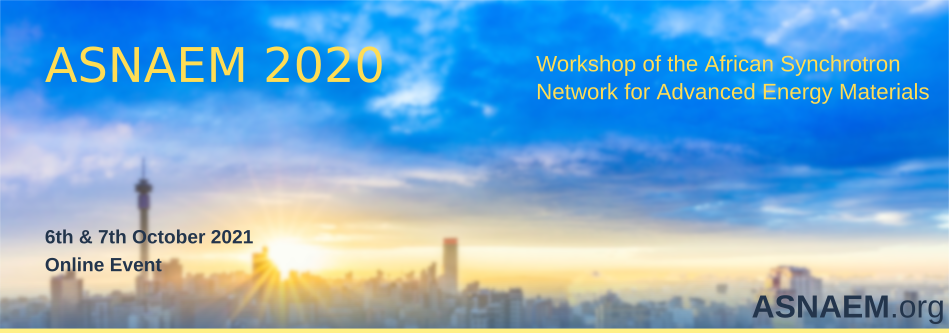Speaker
Description
Comprehensive understanding of the average and local structure of materials plays a major role in formulating reliable deductions about the structure-property correlations. It may lead to complex structure engineering and physical property enhancement. One of the functional materials that have found extensive use in the fabrication of devices of technological importance is Bi2O3 [1]. Bi2O3 exists in many different polymorphs. Its δ–polymorph has the highest ionic conductivity (approximately 1 S cm-1) ever reported for an oxide ion conductor at 730°C [2]. However, it is only stable within a narrow range (730 – 824 °C) [2]. To stabilise δ–Bi2O3 like phases back to room temperature, hence forth referred to as stabilised δ–phases, isovalent and aliovalent cations have been used to substitute for the Bi3+ cations with a moderate decrease in ionic conductivity associated with the substituents [3].
The stabilised δ–phases obtained by substituting Bi3+ with lanthanides have been shown to be highly conductive. However, these are metastable and exhibit phase separation upon prolonged annealing at temperatures around 600 °C [4]. The oxide ions and oxygen vacancies order in a process called ageing in these systems. These problems are normally circumvented by adding low concentrations of cations such as W6+, and Nb5+ [3]. Systems fabricated in this way exhibit both high conductivity and stability relative to the singly substituted systems. In this work, the systems (Bi2O3)1-x-y(Dy2O3)x(Er2O3)y, (Bi2O3)1-x-y-z(Dy2O3)x(Er2O3)y(WO3)z, (Bi2O3)1-x-y-z(Dy2O3)x(Er2O3)y(Nb2O5)z, and (Bi2O3)1-x-y-2z(Dy2O3)x (Nb2O5)y(WO3)2z were fabricated to stabilise the δ–phase and study the effect of the substituents in the local structure.
The local structure of the stabilised δ–phases is a subject of intense research [5]. However, the research focus is on the distribution of the oxide ions around the metal cations, i.e., the metal-oxygen (M–O) correlations. Very few studies have been done on the metal-metal (M–M) correlations. Therefore, this work seeks to bridge this gap and provide a complementary picture of the local structure of the stabilised δ–phases. To this end, total scattering data, the x-ray pair distribution function (xPDF) technique and x-ray absorption spectroscopy have been used to probe the metal-metal correlations and the local environment around a specific substituent to get insight into the local structure of the material around the metal cations.
[1] Maeder, T. International Materials Reviews. 2013, 58, 3-40.
[2] Harwig, H; Gerards, A. Journal of Solid State Chemistry. 1978, 26(3), pp.265-274.
[3] Shitara, K; Moriasa, T; Sumitani, A; Seko, A; Hayashi, H; Koyama, Y; Huang, R; Han, D; Moriwake, H; Tanaka, I. Chemistry of Materials. 2017, 29, 3763-3768.
[4] Jiang, N; Buchanan, R; Henn, F; Marshall, A; Stevenson, D; Wachsman, E. Materials research bulletin. 1994, 29, 247-254.
[5] Borowska-Centkowska, A; Liu, X; Krynski, M; Leszczynska, M; Wrobel, W; Malys, M; Hull, S; Norberg, S; Krok, F; Abrahams, I. RSC advances. 2019, 9, 9640.

